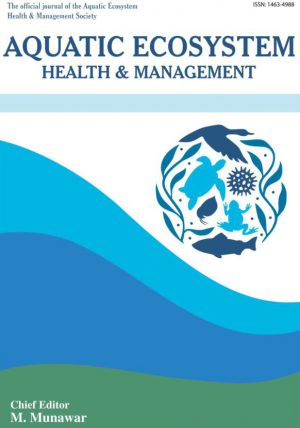
Aquatic Ecosystem Health & Management
Aquatic Ecosystem Health & Management Society
Where to Read
The major objectives of the Aquatic Ecosystem Health and Management Society (AEHMS) are:
The AEHMS encourages the application of ecosystem-based science to management practices that will protect, maintain or restore the health of aquatic ecosystems. Thus its official journal welcomes papers that cover a wide range of disciplines relevant to aquatic sciences such as ecology, microbial ecology, invasion biology, limnology, oceanography, eutrophication, physiology, toxicology/contaminants, food web dynamics, fish-fisheries, climate change, habitat, emerging tools/techniques, socio-economics, education, policy and environmental outreach.
All manuscripts relevant to the objectives of Aquatic Ecosystem Health and Management (AEHM) will be considered for publication in the journal. The journal’s scope and themes include:
Scope
Themes
First-rate peer review of manuscripts is the backbone of scientific publishing and plays a key role in high-quality publications for the advancement of science. A review is a constructive and unbiased critique that is conducted freely and voluntarily. A competent, trustworthy and meticulous review is in fact a service to the author for improving the quality of their articles for international readership. Consequently, the AEHMS policy is that all submitted manuscripts should be peer reviewed by at least two independent reviewers. Sometimes a third reviewer may be used, in the event of contradictory reviews in the standard review process.
The peer review process typically consists of two stages. The original review is the initial comprehensive assessment, and the check-up evaluates the revisions by authors in response to the reviewers’ recommendations.

Aquatic Ecosystem Health & Management
Aquatic Ecosystem Health & Management Society
Where to Read
